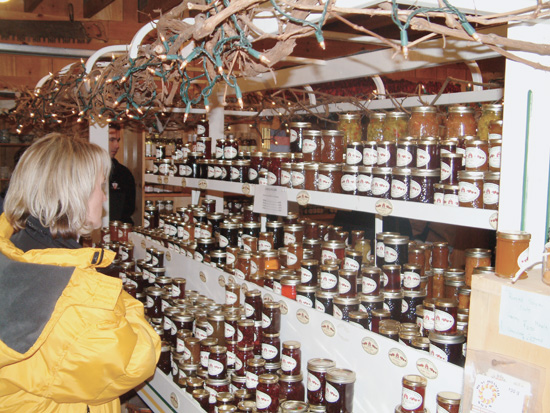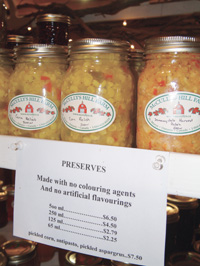
Features
Fruit
Production
Adding value to farm products
As farmers seek to find ways to increase farm income, interest in adding value to farm products has grown tremendously.
March 31, 2008 By Fruit & Vegetable

As farmers seek to find ways to increase farm income, interest in adding value to farm products has grown tremendously. Local, value-added agricultural food production is seen as a critical strategy to sustain small farmers and their communities.

“The value of farm products can be increased by cleaning, cooling, cooking, combining, churning, culturing, grinding, extracting, drying, handcrafting, packaging and distributing, as well as by adding information, education or entertainment,” says Janice McGregor, a business commercialization coach with Alberta Agriculture, Food and Rural Development.
“In addition to offering a higher return, value-added products can open new markets, create recognition for a farm and expand the market season. Small-scale processing can also make a positive contribution to a community. Often, ingredients needed for the final product are purchased locally, staff is hired locally and the product is sold locally. The dollars generated from these activities tend to circulate in the local economy and create spin-offs for other businesses.”
Locally produced specialty foods or non-food items can also provide a window into the unique qualities of a community. These products can give tourists a “taste” of the place to take home as souvenirs and to share with others.
“It is possible to increase a business’ share of the food dollar by adding value to raw agricultural products, but adding value does not come free,” says McGregor. “It often means doing more work, hiring more staff, buying more machinery or supplies, and complying with more rules and regulations about buildings, packaging and labelling.”
“It is possible to increase a business’ share of the food dollar by adding value to raw agricultural products, but adding value does not come free,” says McGregor. “It often means doing more work, hiring more staff, buying more machinery or supplies, and complying with more rules and regulations about buildings, packaging and labelling.”
Have a plan
A comprehensive business plan that includes marketing and finances can help determine the feasibility of an enterprise. Developing a business plan helps operators define the planned business, create a road map for operating the business, set the goal that will be aimed for and satisfy lenders’ requests for information.
“Trying to manage and grow a business without good records is like trying to find an address in a strange city without a road map,” comments McGregor. “Without good records, the business is limited to making educated guesses about progress and whether or not goals are being met. Accessing capital for growth and product development may depend on having accurate cost and pricing figures for the production and marketing of products.”
“Trying to manage and grow a business without good records is like trying to find an address in a strange city without a road map,” comments McGregor.
Lack of knowledge in marketing is often a big issue with producers. In marketing processed and value-added agricultural products, it is important to be innovative in product development and to produce products that meet the needs of target customers. When customer needs are satisfied, the chances of selling products to that customer are increased. A downfall of many producers is developing “me too” products. It makes good business sense to know what other competing products are available and determine if the market can accommodate another similar product.
Although no simple blueprint for success exists for adding value to farm products, a few general practices are:
- make decisions based on good records
- create a high quality product
- evaluate continuously
- capitalize adequately
- establish a loyal customer base
- choose something the entrepreneur loves to do and that fits their personality and goals.
Print this page